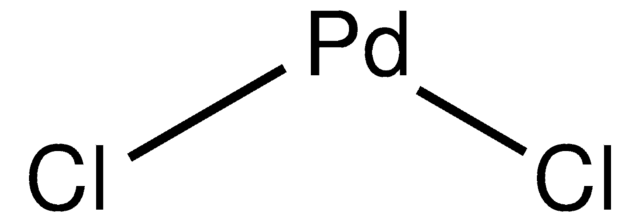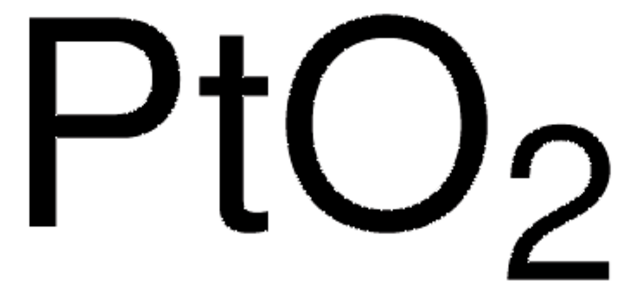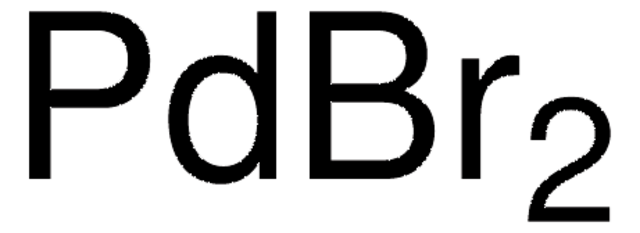520748
Palladium(II) oxide
99.97% trace metals basis
Sinónimos:
Palladium monoxide, Palladium oxide
About This Item
Productos recomendados
Quality Level
assay
99.97% trace metals basis
form
powder and chunks
composition
Pd, 85-87%
reaction suitability
reagent type: catalyst
core: palladium
mp
870 °C (lit.)
density
8.7 g/mL at 25 °C (lit.)
SMILES string
O=[Pd]
InChI
1S/O.Pd
InChI key
HBEQXAKJSGXAIQ-UHFFFAOYSA-N
¿Está buscando productos similares? Visita Guía de comparación de productos
General description
Application
signalword
Danger
hcodes
Hazard Classifications
Ox. Sol. 2
Storage Class
5.1B - Oxidizing hazardous materials
wgk_germany
WGK 3
flash_point_f
Not applicable
flash_point_c
Not applicable
ppe
dust mask type N95 (US), Eyeshields, Gloves
Elija entre una de las versiones más recientes:
¿Ya tiene este producto?
Encuentre la documentación para los productos que ha comprado recientemente en la Biblioteca de documentos.
Los clientes también vieron
Nuestro equipo de científicos tiene experiencia en todas las áreas de investigación: Ciencias de la vida, Ciencia de los materiales, Síntesis química, Cromatografía, Analítica y muchas otras.
Póngase en contacto con el Servicio técnico

![[Pd(OAc)2]3 reagent grade, 98%](/deepweb/assets/sigmaaldrich/product/structures/508/249/99a0ef2c-b77c-4d73-8ed9-0cca05b6b41f/640/99a0ef2c-b77c-4d73-8ed9-0cca05b6b41f.png)








